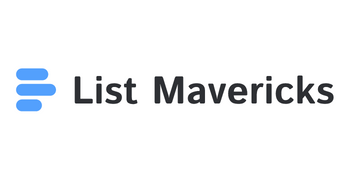Inbound marketing has really changed the way B2B companies reach potential clients. Instead of interrupting people with ads they never asked for, inbound marketing focuses on attracting, converting, and satisfying potential customers by offering content and experiences that actually matter.
B2B inbound marketing builds a steady flow of qualified leads by matching digital marketing efforts with the buyer’s decision-making process. It usually brings in more conversions for less money than old-school methods.
These days, B2B buyers do about 70% of their research before they ever talk to a sales rep. They look up solutions, compare options, and form opinions based on what they read online.
This shift makes inbound strategies especially powerful for B2B companies. Decision-makers want more info and reassurance before they commit, so companies need to show authority and build trust.
From SEO and lead magnets to virtual events and influencer marketing, B2B inbound marketing uses a bunch of tactics that pull customers in instead of pushing messages out.
The best B2B marketers mix content creation, social media, and funnel optimization to nurture leads from that first spark of interest to the final purchase.
Key Takeaways
- Inbound marketing brings in qualified B2B leads with valuable content tailored to the buyer’s journey, not just random ads.
- Content creation is the heart of solid B2B inbound strategies. It builds thought leadership and tackles decision-makers’ pain points.
- Regularly optimizing your marketing channels and conversion paths keeps your lead generation and sales growing.
Understanding Inbound Marketing for B2B

Inbound marketing has flipped the script for B2B companies by focusing on attraction instead of interruption. Marketers align their efforts with how buyers make decisions, creating value through content that actually solves business problems.
Key Principles and Benefits
B2B inbound marketing pulls in business customers, not by chasing, but by giving them something useful. The main idea is to create content that addresses the real pain points of your audience.
When you do this right, your ideal audience comes to you for answers, so you don’t have to chase them down. You end up with higher quality leads who already care about what you offer.
Inbound marketing usually covers:
- Content creation like blogs, whitepapers, and case studies
- SEO optimization for better visibility
- Social media to share your content
- Lead nurturing with email campaigns
This approach costs 62% less than traditional outbound marketing and brings in three times as many leads. Companies that use inbound marketing see better ROI because prospects already feel engaged when they hit your pipeline.
Differences Between B2B and B2C Inbound Marketing
B2B inbound marketing stands apart from B2C in a few big ways. B2B buyers usually have more people involved and the sales cycle drags on for months, not minutes.
Content gets a lot more technical and detailed:
| B2B | B2C |
|---|---|
| Technical whitepapers | Quick lifestyle content |
| Detailed case studies | Simple product reviews |
| ROI calculators | Basic pricing information |
B2B marketing leans hard on logic, ROI, and business value. B2C, on the other hand, often pulls emotional strings. So, B2B content needs to sound professional and data-driven.
Qualifying leads in B2B takes more work. Marketers look at company fit, budget, and timelines. You really have to show industry expertise to earn respect from savvy business buyers.
The Role of Buyer Personas in B2B
Marketers need detailed buyer personas for effective B2B inbound marketing. These fictional characters represent your ideal customers and help you figure out what makes decision-makers tick.
Good B2B personas include:
- Professional role and responsibilities
- Key performance indicators
- Decision-making authority
- Industry-specific challenges
- Trusted information sources
Personas steer content creation, making sure you tackle the right pain points at every stage of the journey.
Testing persona-driven content with organic inbound strategies helps you see what works for different groups. Companies should update their personas as markets and buyer behavior shift.
Building a B2B Inbound Marketing Strategy

If you want a B2B inbound marketing strategy that works, you’ve got to plan thoughtfully, set up clear ways to measure success, and focus on getting real returns. A good strategy draws in quality leads and uses resources wisely.
Crafting a Results-Driven Marketing Strategy
A strong B2B inbound marketing strategy starts with understanding your audience’s pain points and buying journey. Build detailed buyer personas using customer data and market research.
Content sits at the center of inbound marketing. Plan out a content calendar that hits every stage of the buyer’s journey:
- Awareness: Blog posts, infographics, guides
- Consideration: Case studies, webinars, comparison sheets
- Decision: Product demos, consultations, testimonials
Staying consistent matters. Posting quality content regularly helps you become a trusted name in your industry and builds relationships with potential clients.
Plenty of successful B2B companies mix different content formats—blogs, videos, podcasts—to reach more people.
Marketing automation tools help you distribute content and follow up with leads, so you don’t lose anyone along the way.
Defining and Measuring KPIs
To know if your marketing works, you need clear, measurable KPIs. Set metrics that match your business goals, not just vanity numbers.
Essential B2B Inbound Marketing KPIs:
| Funnel Stage | Key Metrics |
|---|---|
| Top | Website traffic, New visitors, Time on page |
| Middle | Conversion rates, Lead quality scores, Email open/click rates |
| Bottom | SQL to customer ratio, Customer acquisition cost (CAC), Sales cycle length |
Track these metrics with analytics tools and build dashboards for regular check-ins.
Set goals based on industry benchmarks or your own past performance. Quarterly reviews help you spot trends and adjust as needed.
Many top B2B marketers say it’s important to get feedback from sales teams so you can fine-tune what counts as a good lead.
Optimizing for ROI in B2B Lead Generation
To get the best ROI, allocate your resources wisely and keep tweaking your lead generation efforts. Focus on the channels and tactics that bring in the best leads for the lowest cost.
Ways to boost content ROI:
- Repurpose your best content across different formats and platforms
- Refresh older, high-performing content regularly
- Analyze what content brings in qualified leads
Lead nurturing programs help move prospects through the funnel more efficiently. Automated email sequences tailored to specific personas can bump conversion rates by as much as 10%.
B2B tech companies often get the best results by combining inbound marketing with targeted outbound. This hybrid approach lets you reach out to high-value prospects while your inbound efforts keep the lead flow steady.
Test landing pages, calls-to-action, and email subject lines regularly. Even small improvements add up and can really lower your customer acquisition costs over time.
Essential Inbound Marketing Channels for B2B

B2B companies should zero in on marketing channels that deliver the best ROI and the right leads. A solid mix of organic search and strategic email campaigns forms the backbone of successful inbound marketing.
SEO and Organic Search
Search Engine Optimization (SEO) is still one of the most powerful tools in B2B inbound marketing. When people have questions, they go straight to Google. If your content shows up, you’ve got a shot at their business.
A good SEO strategy covers:
- Keyword research with industry-specific terms
- Content that solves buyer pain points
- Technical optimization for site speed and mobile
- Quality backlinks from industry sites
Search engine results matter—a lot. Landing on page two means most people never see you. Over 90% of users never click past the first page.
B2B SEO takes patience. Your content needs to show expertise and address real challenges your prospects face.
Email Marketing Tactics
Email marketing is still a powerhouse for nurturing B2B relationships. Industry stats say ROI averages 42:1, which is kind of wild.
To get results, deliver valuable and relevant content at just the right time.
Smart B2B email tactics include:
- Segmenting lists by industry, role, and buying stage
- Personalizing emails to address real pain points
- Using clear, benefit-driven subject lines to boost click-through rates
- Setting up automated workflows based on recipient actions
Marketing automation tools let you build nurturing sequences that react to what each person does. Maybe you send a case study after someone downloads a whitepaper, or follow up after a webinar.
Always measure your results. Keep an eye on open rates, clicks, and conversions so you can tweak your approach. Testing subject lines and formats can make a big difference over time.
Content Marketing and Creation for B2B Audiences

B2B content marketing helps companies grow by giving target audiences useful information at every step of their buying journey. The right content shows off your expertise, builds trust, and brings in qualified leads—if you actually address what your audience needs.
Developing High-Value Educational Content
Educational content is the backbone of B2B marketing. Companies should focus on materials that solve real problems for their customers. Quality educational content helps prospects get a handle on tough topics and shows you know your stuff.
Start by figuring out where the knowledge gaps are in your industry. What do potential clients keep asking? What headaches are they dealing with?
Content should be:
- Research-based with credible data
- Actionable so readers know what to do next
- Relevant to where buyers are in their journey
- Unique in how it tackles the topic
Whitepapers, industry reports, and how-to guides all help your company become a trusted advisor, not just another vendor. That’s how you build relationships—sometimes long before prospects are even ready to buy.
Choosing Effective Content Formats
B2B audiences take in content in all sorts of ways, depending on what they like, how much time they’ve got, and where they are in the buying process.
If you stick to a structured content creation process, you’ll see more consistency, better quality, and probably use your resources more efficiently. (Source)
Popular B2B content formats include:
| Format | Best For | Engagement Level |
|---|---|---|
| Blog articles | SEO, awareness | Medium |
| Case studies | Consideration stage | High |
| Webinars | Complex topics, lead gen | High |
| Videos | Visual demonstrations | High |
| Infographics | Data visualization | Medium |
| Podcasts | On-the-go consumption | Medium |
Pick your content format based on how complex your message is and what your audience prefers.
A technical whitepaper? That’s probably for engineers. But if you’re trying to reach busy executives, you might want to use short videos or executive summaries instead.
Using multiple formats lets you reach more people since everyone learns and consumes content differently.
Thought Leadership and Credibility Building
Thought leadership helps B2B companies stand out in crowded markets. When you share unique perspectives and show off deep expertise, you get noticed.
Strong B2B content marketing strategies that lean into thought leadership can really boost your brand’s visibility and bring in quality leads.
To build thought leadership, start by figuring out where your company has unique expertise.
Dig into original research or share data-driven insights.
Don’t be afraid to take a stand on industry trends or challenges.
Get your executives out there—speaking engagements work wonders.
When you create thought leadership content, skip the self-promotion. Focus on giving people real value.
If you’re the first to address new challenges, you’ll show true industry leadership.
You build credibility by being consistent and accurate.
Back up every claim with evidence, and keep your editorial standards high. That’s how you become a trusted information source for buyers at every stage.
Leveraging Social Media for B2B Brand Visibility

Social media gives B2B companies a serious edge when it comes to building their brand and connecting with new clients.
If you use these platforms strategically, you can boost your visibility and pull in better leads.
Selecting the Right Social Media Platforms
Let’s be honest—not every social media platform works for B2B marketing.
LinkedIn is still the top pick for professional networking and B2B leads. In fact, 80% of B2B leads come from LinkedIn.
Twitter (or X, if you prefer) is great for industry conversations and sharing thought leadership. Its short format is perfect for quick updates and news.
Facebook and Instagram? They’re better for showing the human side of your brand and giving people a peek at your company culture.
When you’re choosing platforms, think about where your audience hangs out.
Consider what kind of content your team can actually produce, and look at platform-specific metrics that matter to your goals.
Don’t forget to check out what your competitors are doing on social media too.
Increasing Brand Awareness and Engagement
To build brand visibility, you need to share valuable content that really speaks to your B2B audience.
Share industry insights, case studies, and educational posts that show you know your stuff.
If you get employees involved, your reach can skyrocket. Content shared by employees usually gets 8x more engagement than posts from the official brand account.
People love visuals—infographics, videos, and images get shared 40% more than plain text. So, mix it up to boost your engagement rates.
Connect with your audience in real ways.
Reply to comments and messages quickly.
Join in on industry conversations.
Share client success stories and highlight your company’s expertise with original research.
Social media marketing lets you target decision-makers with paid campaigns and sponsored content, which can take your brand awareness even further.
Optimizing Performance and Conversion Throughout the Funnel

If you want to turn casual website visitors into loyal customers, you’ve got to address their needs at every stage.
B2B success really comes down to guiding prospects through a smart, well-designed journey with the right touchpoints.
Guiding Decision-Makers Through the Awareness Stage
At the awareness stage, you need content that tackles the real pain points of B2B decision-makers.
Companies focusing on this stage see 20% higher conversion rates than those who skip it.
Write educational blog posts, white papers, and industry reports that show off your expertise—without going for the hard sell.
These materials should answer common questions your audience asks.
Point out industry challenges your solution can solve.
Share actionable insights that decision-makers can actually use right away.
Use data visualization and case studies to make complex stuff easy to understand.
With analytics tools, you can see which awareness content works best and keep tweaking your marketing funnel for better results.
Boosting Customer Satisfaction and Drive Conversions
After you’ve built awareness, remove anything that slows prospects down.
Conversion funnel analysis shows you where people get stuck so you can fix those spots.
Try these techniques to boost satisfaction:
- Personalize communications based on what you already know about prospects.
- Make decisions easier with comparison charts and ROI calculators.
- Share targeted case studies that match the prospect’s industry.
Live chat support and quick replies to questions show you’re reliable and help build trust.
A lead scoring system helps you figure out which prospects need more nurturing and which are ready for sales.
A/B test your CTAs, landing pages, and email sequences to see what actually drives conversions.
Keep optimizing with real performance data—don’t just guess.
Frequently Asked Questions

Inbound marketing can be tricky for B2B companies—definitely not the same as B2C. Here are some of the most common questions about inbound strategies for B2B.
How can inbound marketing strategies be adapted for B2B companies?
B2B companies need to create high-value content that tackles specific industry pain points.
This content should show expertise and build credibility with decision-makers, who usually have longer buying cycles.
You’ll want to reverse engineer customer needs to make your content relevant. Start by understanding your target accounts’ goals and challenges, not just keywords.
Focus on thought leadership and educational content, not just promotion. That’s how you build trust with all the stakeholders involved in B2B purchases.
What are the best practices for implementing inbound marketing in a B2B environment?
Start by defining your buyer personas and mapping content to each stage of their buying journey.
A solid inbound marketing plan should target the right decision-makers inside companies.
Bring your sales and marketing teams together so messaging stays consistent and leads get handed off smoothly.
This teamwork helps turn marketing-qualified leads into real sales opportunities.
Invest in the right tech stack to automate and scale your inbound efforts.
The right tools make it easier to manage complex B2B relationships and track those long sales cycles.
How does content creation differ between B2B and B2C inbound marketing?
B2B content usually tackles more complicated problems and solutions, so you’ll need technical expertise and industry know-how.
You’re often speaking to several stakeholders in the same company, each with their own concerns.
Formats like whitepapers, case studies, and in-depth guides work better for B2B than the entertainment-style content you see in B2C.
B2B content should highlight ROI, efficiency, and business impact—not just personal benefits.
Decision-makers want numbers and proof they can show to others.
What role does email marketing play in a B2B inbound marketing strategy?
Email marketing is huge for nurturing B2B leads, especially since deals can take months to close.
Segmented campaigns keep your brand top-of-mind through those long consideration phases.
Personalized email sequences deliver the right content based on a prospect’s industry, role, and stage in the journey. You’ll see better engagement than with generic newsletters.
Email also makes it easy for decision-makers to share info internally, so your content reaches more people involved in the purchase.
What metrics are most important for measuring the success of B2B inbound marketing campaigns?
Track conversion rates at every stage, from first engagement to closed deals.
Since B2B sales cycles are longer, keep an eye on lead quality metrics, not just the numbers.
Watch how deeply people engage with your content—things like time on page and repeat visits show real interest.
Figure out your customer acquisition costs and lifetime value to prove the ROI of inbound marketing.
These numbers help make the case for inbound over old-school outbound tactics.
How can a B2B company effectively integrate inbound marketing with its existing marketing framework?
Start by auditing your current marketing efforts. You’ll spot gaps and maybe even find you’re using inbound marketing without realizing it.
Add inbound elements to your traditional tactics, but do it gradually. There’s no need to rush—give yourself time to build up content and get your measurement processes sorted out.
Make sure your teams get trained on inbound methodologies. Set up the right attribution models so you can see how inbound actually boosts your revenue.
That way, you’ll have a better shot at winning support for your inbound projects.

